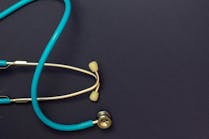It seems like healthcare facilities have been struggling with intravenous (IV) therapy supply shortages forever and there is no end in sight. It was five years ago that Hurricane Maria devastated production of IV bags in Puerto Rico, causing widespread shortages of sodium chloride 0.9% injection bags also known as “saline.” Even before that event, IV saline bags “long faced supply issues,” as noted by the U.S. Food and Drug Administration (FDA) in a February 2018 press release.1
Virtually all hospitalized patients require saline, whether it is part of a medication infusion, hydration, resuscitation, or as an irrigation fluid.2
Despite efforts to diversify production and increase capacity, here we are in 2022 facing the same challenges. So how did we get to another place of widespread IV supply shortages, how is it impacting care, and what can healthcare industry stakeholders to do fix it?
How did we get here?
While Hurricane Maria in 2017 was one of the most publicized causes for IV solution shortages in recent years, the problems began long before that storm. As the FDA stated at the time, “Although Hurricane Maria affected Baxter’s facilities in Puerto Rico, there have been limited supplies of IV fluids since 2014.”3
Throughout 2014, the U.S. experienced a nationwide shortage of IV solutions, specifically saline large volume intravenous solution. Manufacturers blamed supply disruptions on plant shutdowns for routine inspection and upgrades.4 A “worse than average” flu season placed strain on already limited supplies. Hospitals reported a significant jump in price – with bags costing fix or six times more than they had prior to the shortage.
The FDA acts
To help alleviate the 2014 shortage, the FDA announced that it was working with the three U.S. manufacturers, Baxter Healthcare, B. Braun Medical and Hospira, to increase supply.5 The agency also approved Fresenius Kabi USA to temporarily import its European sodium chloride 0.9% Freeflex Injection Solution for Intravenous Infusion into the U.S. market in late 2014.6
Then in May 2015, the FDA approved Baxter’s Sabinanigo, Spain facility as a manufacturing site for 0.9% sodium chloride injection, USP, for the U.S. market.7
Even with these interventions, the American Society of Health-System Pharmacists (ASHP) reported shortages of 0.9% sodium chloride irrigation and 0.45% sodium chloride injection bags throughout 2016 across multiple manufacturers, including B. Braun, Baxter, Hospira and Pfizer.8
Market changes and challenges
In February 2017, ICU Medical announced that it had completed acquisition of Hospira Infusion Systems from Pfizer, including IV pumps, solutions and devices. The marriage of the companies established “ICU Medical [as] one of the world’s leading pure-play infusion therapy companies.”9
But the honeymoon was soon over. In July 2017, ICU announced that it was voluntarily recalling one lot of saline injection that had been manufactured in the U.S. by Hospira on February 1, 2016, and was distributed nationwide to Hospira customers between April 14, 2016, and February 2, 2017. The recall was prompted by, “a confirmed customer complaint of particulate matter identified as stainless steel within a single flexible container.”10
The following month, August 2017, B. Braun announced a double whammy to the market, with a press release stating: “unplanned production interruptions have resulted in significant decreases in supply of product necessary to meet current demands of our customers” and the company was “planning a plant shutdown to do critical maintenance work at the end of the year,” which would further strain its inventory levels.11
Then came Hurricane Maria one month later in September 2017, knocking Baxter’s IV saline production facilities off the grid.
Offshore supplies to address the shortages
The FDA and manufacturers recognized the domestic challenges and the opportunity to secure saline products from plants outside of the U.S. In late 2017, the agency announced that it had approved temporary import of products from Baxter facilities in Ireland, Australia, Mexico and Canada, and from B. Braun in Germany.
In addition to temporary imports, the FDA also continued to expedite review of drug applications, including approval of Fresenius Kabi and Laboratorios Grifols saline to help address the shortage.12
In January 2018, B. Braun Medical announced that it has received FDA approval for 0.9% sodium chloride injection, USP in its Ecoflac Plus 500 mL container, which it had been temporarily importing to the U.S. from its FDA inspected sterile injectable facility in Melsungen, Germany.13
More relief came in April 2018, when Baxter initiated temporary importation of saline products produced by the company’s manufacturing facility in Ireland and marketed in Europe.14
Then the market took a step back when Fresenius Kabi issued a voluntary nationwide recall of its sodium chloride injection, USP, 0.9% in November 2018, citing product labeling issues.15
The calm before the next storm
Things were looking up in early 2019, after the U.S. Justice Department closed an antitrust probe examining possible communication among IV solutions manufacturers during supply shortages that created higher prices.16
In May 2019, B. Braun announced Solutions for Life, a $1 billion investment in “new and enhanced IV therapy manufacturing facilities including a new state-of-the-art manufacturing facility in Daytona Beach, Fla., and modernizations to existing facilities in Irvine, Calif., and Allentown, Pa.”17
A sudden drain on sodium chloride from COVID
From the time SARS-CoV-2 hit the U.S. in early 2020, through the waves of variants that have sickened patients for nearly three years, healthcare providers have struggled with saline shortages due to a variety of factors.
The supply has never fully stabilized from the production issues and recalls that have persisted since 2014, despite efforts by the FDA and manufacturers. The pandemic-driven influx of hospitalized patients increased demand for saline used to rehydrate patients, administer IV medications and flush vascular access devices (VAD).
Even COVID-19 vaccines have played a role in saline shortages. Pfizer, a producer of the small vials of saline used to flush drugs infused through intravenous lines, shifted use of these vial to production of its Pfizer-BioNTech COVID-19 vaccine. When healthcare providers turned to large bags of saline to fill flush syringes, this snowballed into shortages of these products as well.
Alongside the pandemic, recalls have continued, including Cardinal Health’s August 2021 voluntary recall of select Monoject Flush Prefilled Saline Syringes (0.9% sodium chloride), which are intended for use in flushing compatible intravenous tubing systems and indwelling intravascular access devices.18 A subsequent recall of Aligned Medical Solutions custom convenience kits, which contained the Monoject syringes, occurred in November 2021.
Where we are now?
The rollercoaster of supplies and shortages has continued into 2022. In January of this year, B. Braun announced that it had received final FDA approval for its new pharmaceutical manufacturing plant in Daytona Beach, FL. The site will produce 0.9% sodium chloride for injection available in B. Braun’s Excel Plus IV Bags in 1,000 mL and 500 mL sizes.19
This was followed just two months later in March 2022, by B. Braun’s announcement of voluntary recall of five lots of 0.9% sodium chloride for injection USP 250ML in Excel “due to fluid leakage or low fill volume of the respective containers.”20
At the time this article was written (September 2022), the FDA listed shortages of sodium chloride 0.9% injection bags across 52 different products from six manufacturers (B. Braun Medical, Baxter Healthcare, Fresenius Kabi USA, Hospira, ICU Medical and Laboratorios Grifols) citing reasons including demand increase and manufacturing delays.21
Medical plastics shortages add more supply pressures
It is not only IV solutions in short supply, but also medical plastics that are key to the production of IV administration products, including IV tubing, catheters, and syringes. These shortages were spurred by the COVID-19 pandemic and further aggravated by a February 2021 winter storm that shut down oil fields and refineries in Texas that produce petrochemical products used in plastic products, including medical products.
Supply costs in general, whether in short supply or not, have skyrocketed for healthcare organizations since the pandemic began. In its Fall 2022 report, The Current State of Hospital Finances, KaufmanHall notes how expenses for supplies are projected to grow by $11 billion in 2022, primarily due to inflationary pressures.22
Group purchasing organization (GPO) Premier also predicts that the Russia/Ukraine war will impact the global supply and pricing of plastics due to “disruption to crude oil and natural gas production and flow in Eastern Europe or Russia.” In the 2022 Premier Supply Chain Report on Impacts of Russia/Ukraine Conflict, the GPO states,” Both natural resources are used in the production of plastics, which in turn, are used to manufacture multiple healthcare products such as trays, syringes, specimen bottles, pill containers, sharps containers, and much more.”23
What is the path forward?
HPN reached out to IV saline solutions manufacturers to understand the challenges facing healthcare organizations because of shortages and obtain their recommendations on how providers can maintain consistent and effective IV therapy to patients. BD offered its response.
“No industry is immune to current supply chain volatility,” said Rian Seger, Vice President and General Manager, Medication Delivery Solutions, U.S. Region at BD. “Hospitals are no exception, and we recognize the critical role BD plays in maintaining supply for products that are needed for undisrupted patient care – like those for IV therapy. We also understand that healthcare organizations are feeling pressures from labor challenges, reimbursement, supply disruptions and inflation, to name a few.”
“BD is committed to helping overcome these challenges – and it’s why we continue to invest in innovation, supply continuity and capacity for these essential medical devices,” Seger continued. “This includes building redundancies to source raw materials, engaging policymakers to prioritize medical supply production and expanding U.S. manufacturing capacity. In fact, BD has increased supply of these devices to help overcome other challenges in the market, and we will continue to turn on new capacity.”
“We have dedicated teams at BD that can provide support on product capacity and innovation, as well as training and education, clinical assessments and more, to help healthcare organizations make the right choices for their patient needs,” Seger added.
Resources for healthcare providers
Given continued IV supply disruptions, ongoing spread of COVID-19, and experts predicting a severe flu season for 2022-2023 based on flu levels in the Southern Hemisphere, it is in the best interest of U.S. healthcare providers to keep abreast of shortages and alternatives. Here are a few of the industry resources available online.
Earlier this year, the U.S. Food and Drug Administration (FDA) published a letter to healthcare personnel on its website (www.fda.gov) with prefilled saline flush syringe conservation strategies24
The Institute for Safe Medical Practices (ISMP) has guidance on its website (www.ismp.org) for both pharmacy personnel and nurses on managing shortages of 0.9% sodium chloride, sterile water for injection, and EPINEPHrine.25
The ASHP Drug Shortages Database, accessible on its website (www.ashp.org), provides an up-to-date list of shortages, reasons for them, and available products.26
The National Home Infusion Association (NHIA) has compiled product shortage recommendations to help clinicians manage patient care and conserve prefilled 0.9% sodium chloride syringe supplies, which is available on its website (https://nhia.org).27 hpn
References
1. Statement from FDA Commissioner Scott Gottlieb, M.D., on ongoing efforts to mitigate impact of saline shortages during this flu season, FDA, February 1, 2018, https://www.fda.gov/news-events/press-announcements/statement-fda-commissioner-scott-gottlieb-md-ongoing-efforts-mitigate-impact-saline-shortages-during
2. Mazer-Amirshahi M, Fox ER. Saline Shortages - Many Causes, No Simple Solution. N Engl J Med. 2018 Apr 19;378(16):1472-1474. doi: 10.1056/NEJMp1800347. Epub 2018 Mar 21. PMID: 29561694
3. FDA works to help relieve the IV fluid shortages in wake of Hurricane Maria, FDA, November 14, 2017, https://www.fda.gov/drugs/drug-safety-and-availability/fda-works-help-relieve-iv-fluid-shortages-wake-hurricane-maria
4. Hospitals Struggle With IV Saline Shortage, TIME, January 29, 2014, https://time.com/2589/hospitals-struggle-with-iv-saline-shortage/
5. U.S. facing concerning shortage of IV fluids, CBS News, January 29, 2014, https://www.cbsnews.com/news/nation-facing-dangerous-shortage-of-iv-fluids/
6. Importation of European Drug Product, Fresenius Kabi USA letter, October 16, 2014, https://www.fda.gov/media/89693/download
7. Baxter Receives U.S. FDA Approval for 0.9% Sodium Chloride Injection, USP from Sabinanigo, Spain, Facility for the U.S. Market, Baxter, May 12, 2015, https://investor.baxter.com/investors/events-and-news/news/press-release-details/2015/Baxter-Receives-US-FDA-Approval-for-09-Sodium-Chloride-Injection-USP-from-Sabinanigo-Spain-Facility-for-the-US-Market/default.aspx
8. Drug Shortages database, ASHP, https://www.ashp.org/drug-shortages/current-shortages/drug-shortage-detail.aspx?id=6
9. ICU Medical Completes the Acquisition of Hospira Infusion Systems from Pfizer, ICU Medical, February 6, 2017, https://www.icumed.com/about-us/news-events/news/2017/icu-medical-completes-the-acquisition-of-hospira-infusion-systems-from-pfizer
10. ICU Medical Issues a Voluntary Nationwide Recall of One Lot of 0.9% Sodium Chloride Injection Due to the Presence of Particulate Matter, FDA, July 28, 2017, https://www.fda.gov/safety/recalls-market-withdrawals-safety-alerts/icu-medical-issues-voluntary-nationwide-recall-one-lot-09-sodium-chloride-injection-due-presence
11. Letter to customers, B. Braun, August 27, 2017, https://www.fda.gov/media/107083/download
12. FDA works to help relieve the IV fluid shortages in wake of Hurricane Maria, FDA, November 14, 2017, https://www.fda.gov/drugs/drug-safety-and-availability/fda-works-help-relieve-iv-fluid-shortages-wake-hurricane-maria
13. B. Braun Medical Receives FDA Approval for 0.9% Sodium Chloride in Ecoflac Plus, B. Braun, January 31, 2018, https://www.bbraunusa.com/en/company/newsroom/news/2018/1st-quarter-2018/b--braun-medical-receives-fda-approval-for-0-9--sodium-chloride-.html
14. Letter to customers, Baxter, April 5, 2018, https://www.fda.gov/media/112519/download
15. Fresenius Kabi Issues Voluntary Nationwide Recall of Sodium Chloride Injection, USP, 0.9% Due to Product Labeling Incorrectly Stating Stoppers Do Not Contain Latex, FDA, November 21, 2018, https://www.fda.gov/safety/recalls-market-withdrawals-safety-alerts/fresenius-kabi-issues-voluntary-nationwide-recall-sodium-chloride-injection-usp-09-due-product
16. U.S. closes IV solution shortage antitrust probe, Baxter says, Reuters, February 22, 2019, https://www.reuters.com/article/us-baxter-intl-antitrust-idUKKCN1QB25K
17. B. Braun Announces $1 Billion Investment to Alleviate IV Fluid Shortages in the U.S. Healthcare System, B. Braun, May 14, 2019, https://www.bbraunusa.com/en/company/newsroom/news/2019/quarter-2/b--braun-announces--1-billion-investment-to-alleviate-iv-fluid-s.html
18. Cardinal Health announces a voluntary recall for select Monoject™ Flush Prefilled Saline Syringes (0.9% Sodium Chloride), Cardinal Health, August 4, 2021, https://www.cardinalhealth.com/en/cmp/ext/corp/monoject-flush-prefilled-saline-syringes-issue.html
19. B. Braun Receives FDA Approval of Daytona Beach Pharmaceutical Manufacturing Site, B. Braun, January 28, 2022, https://www.bbraunusa.com/en/company/newsroom/news/2022/quarter-1/b--braun-receives-fda-approval-of-daytona-beach-pharmaceutical-m.html
20. B. Braun Medical Inc. Issues Voluntary Nationwide Recall of 0.9% Sodium Chloride for Injection USP 250ML in Excel Due to Fluid Leakage or Low Fill Volume, FDA, March 3, 2022, https://www.fda.gov/safety/recalls-market-withdrawals-safety-alerts/b-braun-medical-inc-issues-voluntary-nationwide-recall-09-sodium-chloride-injection-usp-250ml-excel
21. Current and Resolved Drug Shortages and Discontinuations Reported to FDA, FDA, accessed September 27, 2022, https://www.accessdata.fda.gov/scripts/drugshortages/dsp_ActiveIngredientDetails.cfm?AI=Sodium+Chloride+0.9per+Injection+Bags&st=c&tab=tabs-4&panels=1
22. The Current State of Hospital Finances: Fall 2022 Update, KaufmanHall, September 15, 2022, https://www.kaufmanhall.com/insights/research-report/current-state-hospital-finances-fall-2022-update
23. Premier Supply Chain Report on Impacts of Russia/Ukraine Conflict, Premier, February 2022, https://premierinc.com/images/newsroom/Premier-Supply-Chain-Report-on-Russia-Ukraine-Conflict-FINAL-3.1.22.pdf
24. Prefilled Saline Flush Syringe Conservation Strategies - Letter to Health Care Personnel, FDA, March 21, 2021, https://www.fda.gov/medical-devices/letters-health-care-providers/prefilled-saline-flush-syringe-conservation-strategies-letter-health-care-personnel
25. Management of Drug Shortages with 0.9% Sodium Chloride, Sterile Water for Injection, and EPINEPHrine, ISMP, January 13, 2022, https://www.ismp.org/resources/management-drug-shortages-09-sodium-chloride-sterile-water-injection-and-epinephrine
26. Current Drug Shortages Database, ASHP, https://www.ashp.org/drug-shortages/current-shortages
27. NHIA Guidance for Addressing Shortages of Sodium Chloride 0.9% Injection Syringes for Flushing Venous Access Devices, https://nhia.org/nhia-guidance-for-addressing-shortages-of-sodium-chloride-0-9-injection-syringes-for-flushing-venous-access-devices/
Infusion therapy scheduling in the face of supply and staffing shortages
The complex model of scheduling patients for infusion therapy has become even more challenging as infusion centers face both staff and supply shortages, according to Obehi Ukpebor, Director of Customer Success for Infusion Centers, LeanTaaS.
“It is almost impossible for infusion centers to predict demand,” said Ukpebor. “Someone is going to walk in tomorrow, get a cancer diagnosis and for the next eight weeks will need treatment. If you don’t have the right personnel, with the right equipment, in the right room, at the right time, with the right patient, you can’t perform that service at that time.”
Ukpebor says today most infusion appointments are made through an open calendar or block-based scheduling where patients are scheduled on a first-come, first-served basis. There is no supply versus demand logic behind it; therefore, centers cannot effectively balance patient needs with clinician and equipment/supply availability.
Complicating the scheduling are factors such as variability in the type and duration of treatment required by patients at each appointment and matching patient needs to clinician skill set so staff members are practicing at the top of their licenses. From a supply perspective, infusion centers must consider the number of pharmacy techs they have available to prepare drugs for infusion, and whether this meets patient demand on any given day.
Ukpebor says LeanTaaS applies machine learning and predictive analytics to help infusion centers achieve the correct balance of patients, services, staffing and supplies. By providing projections of scheduled and predicted volume, centers can better plan resources to meet demand.
His advice to infusion centers:
“Listen to your nurses. They know a lot more about what is happening on the floor and are a lot closer to the patients’ needs. Talk to them to make sure the data makes sense.”

Kara Nadeau | Senior Contributing Editor
Kara Nadeau is Sterile Processing Editor for Healthcare Purchasing News.






